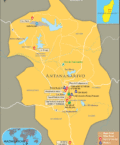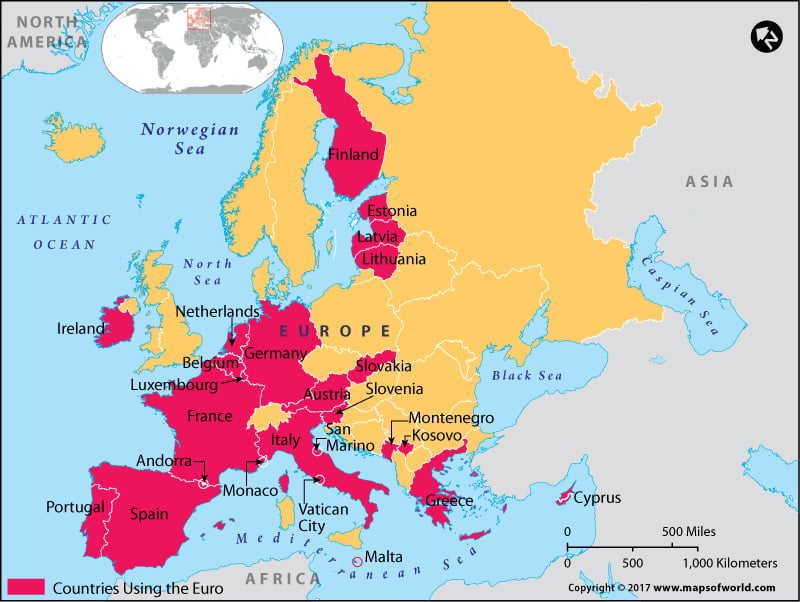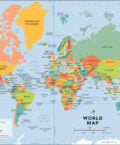Quick Facts
Area44,579,000 sq. km.
Countries48
Literacy Rate65.5%
Largest CountryChina
Highest PeakMount Everest, 8,848 meters (29,029 feet) above sea level
Lowest PointDead Sea, 422 meters (1,384.5 feet) below sea level
Principal ReligionsHinduism, Islam, Buddhism, Christianity, Shintoism, Taoism, Zoroastrianism
Major LanguagesChinese, Hindi, Bengali, Japanese, Punjabi, Javanese, Korean
Continent Name: Asia
Story behind the name: The word 'Asia' originated from an Ancient Greek word 'Ασία', first attributed to Herodotus (about 440 BC) in reference to Anatolia, or for the purposes of describing the Persian Wars, to the Persian Empire, in contrast to Greece and Egypt.
- It originally referred to the east bank of the Aegean Sea, an area known to the Hittites as 'Assuwa'.
- It could have originated from an Aegean root 'Asis', which means "muddy and silty".
- It derived from a borrowed Semitic root 'Asu', which means "rising" or "light," which refers to the sunrise, Asia thus meaning 'Eastern Land'.
- In Greek mythology, "Asia" (Ἀσία) or "Asie" (Ἀσίη) was the name of a Nymph or Titan goddess of Lydia.
Ancient continent name: Assuwa has been suggested as the origin for the name of the continent "Asia."
Area: 17,212,000 square miles or 44,579,000 square kilometres.
Population: Most Populous Continent - Approximately 4.1 billion people (60% of the world's current human population) live in Asia.
Location: Asia is the world's largest continent and is traditionally defined as a part of the landmass of Eurasia—with the western portion of Eurasia occupied by Europe. Asia occupies the eastern part of the Eurasian landmass and the adjacent islands and is separated from Europe by the Ural Mountains.
- It is located to the east of the Suez Canal, east of the Ural Mountains, and south of the Caucasus Mountains and the Caspian and Black Seas.
- It is bounded on the east by the Pacific Ocean, on the south by the Indian Ocean, and on the north by the Arctic Ocean
Economy and Currencies: Asia has the second largest nominal GDP of all continents after Europe but the largest when measured in PPP. The largest economies in Asia are China, Japan, India, South Korea, and Indonesia. Speaking of currency, there are different kinds of currencies used across Asia.
- Afghanistan - Afgani
- Armenia - Dram
- Azerbaijan - New Azerbaijani Manat
- Bahrain - Bahraini Dinar
- Bangladesh - Taka
- Bhutan - Ngultrum
- Brunei - Brunei Dollar
- China - Yuan Renminbi
- Cyprus - Euro
- Cambodia - Riel
- East Timor - U.S. Dollar
- India - Indian Rupee
- Indonesia - Rupiah
- Iran - Iranian Rial
- Iraq - Iraqi Dinar
- Israel - Israeli New Sheqel
- Japan - Yen
- Jordan - Jordanian Dinar
- Kazakhstan - Tenge
- Kuwait - Kuwaiti Dinar
- Kyrgyzstan - Kyrgyzstani Som
- Laos - Kip
- Lebanon - Lebanese Pound
- Malaysia - Malaysian Ringgit
- Maldives - Rufiyaa
- Mongolia - Tögrög
- Myanmar - Kyat
- Nepal - Nepalese Rupee
- North Korea- North Korean Won
- Oman - Omani Rial
- Pakistan - Pakistani Rupee
- Philippines - Peso
- South Korea- South Korean Won
- Qatar - Qatari Riyal
Languages: Asia is home to several language families and many language isolates. Most Asian countries have more than one language that is natively spoken.
- More than 780 languages spoken in India
- More than 700 living languages are spoken in Indonesia
- More than 170 indigenous languages are spoken in the Philippines
- China has many languages and dialects in various provinces
Colonization: Colonization in Asia traces its roots back to the late 15th century with a series of voyages that sought a sea passage to India in the hope of establishing direct spice trade between Europe and Asia. Before 1500, European economies were largely self-sufficient, only supplemented by minor trade with Asia and Africa. Within the next century, however, European and Asian economies were slowly becoming integrated through the rise of new global trade routes.
In the 16th century, the Portuguese broke the monopoly of trade by the Arabs and Italians between Asia and Europe by the discovery of the sea route to India around the Cape of Good Hope in Africa. However, with the rise of the rival Dutch East India Company, Portuguese influence in Asia was gradually eclipsed. Later the English and French established settlements in India and traded with China. Their own acquisitions would gradually surpass those of the Dutch. Following the end of the Seven Years' War in 1763, the British eliminated the French influence in India and established the British East India Company as the most important political force on the Indian Subcontinent.
European demand for Asian raw materials dramatically increased and the severe Long Depression of the 1870s provoked a scramble for new markets for European industrial products and financial services in Africa, the Americas, Eastern Europe, and especially in Asia. This scramble coincided with a new era in global colonial expansion known as "New Imperialism," which saw a shift in focus from trade. Between the 1870s and the beginning of World War I in 1914, the United Kingdom, France, and the Netherlands — the established colonial powers in Asia — added to their empires vast expanses of territories in the Middle East, the Indian Subcontinent, and South East Asia. In the same period, the Empire of Japan, following the Meiji Restoration; the German Empire, following the end of the Franco-Prussian War in 1871; Tsarist Russia; and the United States, following the Spanish-American War in 1898, quickly emerged as new imperial powers in East Asia and in the Pacific Ocean area.
South East Asia or South Asia
- Afghanistan
- Nepal
- India
- Pakistan
- Bhutan
- Bangladesh
- Maldives
- Sri Lanka
- Malaysia
- Singapore
- Myanmar
- Thailand
- Brunei
- Indonesia
- Vietnam
- Cambodia
- Philippines
- Iraq
- Iran
- Lebanon
- Yemen
- UAE
- Israel
- Jordon
- Kuwait
- Kingdom of Bahrain
- State of Qatar
Central Asia
- Kazakhstan
- Mongolia
- Korea
- Kyrgyzstan
- Tajikistan
- China
- Korea
- Turkmenistan
Culture of Asia
Asian art, music, cuisine, and literature are important parts of Asian culture. Eastern philosophy and religion also play a major role in Asian culture, with Hinduism, Taoism, Confucianism, Buddhism, Christianity and Islam all represented. One of the most complex parts of Asian culture is the relationship between traditional cultures and the Western world.
ACOD~20120924
Last Updated on: July 16, 2020









